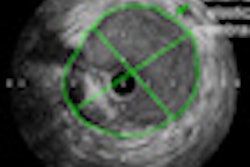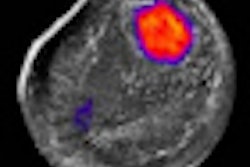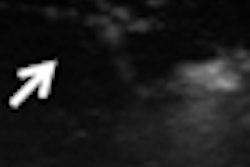A brain ultrasound examination can be used to better identify preterm infants who might develop microcephaly, or smaller than normal head size. Early recognition of this condition in infants can enable healthcare providers to promptly implement intervention and counseling services.
Infants who have microcephaly are at increased risk of developing epilepsy, cerebral palsy, and/or other neurodevelopmental disabilities. A multidisciplinary research team of pediatric neurologists, neonatologists, and radiologists suggest that the discovery of echolucent lesions and ventriculomegaly on ultrasound can help identify the condition, according to a published analysis of more than 900 infants (Journal of Child Neurology, August 19, 2010).
Principal investigator Kalpathy Krishnamoorthy, MD, a pediatric neurologist and director of the neonatal intensive care follow-up clinic at Massachusetts General Hospital in Boston, led a team that retrospectively evaluated the medical records of 923 infants who had been enrolled in the Extremely Low Gestational Age Newborn (ELGAN) study.
The infants were among a group of 1,201 born between 2002 and 2004 at a gestational age of less than 28 weeks at one of 14 U.S. hospitals participating in the ELGAN study. All infants had undergone a protocol ultrasound scan, had a head circumference z-score greater than -2 at birth, and had a head circumference measurement at approximately 24 months post-term equivalent.
Head circumference measurements were made at the largest possible occipital-frontal circumference. Researchers defined microcephaly as a head circumference z-score of less than -2.
Routine cranial ultrasound scans were performed, including the six standard coronal views and five parasagittal views using the anterior fontanel as the sonographic window.
For the study, two independent readers -- a sonologist at the hospital where the infant was born, and a sonologist at a different site participating in the ELGAN study -- reviewed and reported the findings. In cases where the readers' findings differed, a third reader reviewed the scan. None of the readers had access to the patients' clinical information.
Nine percent of the children were microcephalic at the age of 2 years, and 6% of the children whose cranial ultrasound scans in the neonatal intensive care unit were normal developed microcephaly, according to the authors. However, 20% of all infants whose ultrasound showed ventriculomegaly and 19% whose ultrasound revealed an echolucent lesion in the cerebral white matter were microcephalic.
Children who had moderate to severe ventriculomegaly on any ultrasound scan were almost three times more likely to have a head circumference z-score less than -2, compared with children who had no abnormality on any scan, according to the authors. Additionally, almost 80% of the infants diagnosed with a bilateral cerebellar hemorrhage had abnormal head growth at 24 months.
Although the research team discovered that the findings of routine cranial ultrasound scans -- specifically, ventriculomegaly and echolucent lesions -- of very preterm neonates had low positive predictive values, at 24% and 27%, respectively, they did have high negative predictive values, at 91% and 90%, respectively. The researchers suggested that such white matter damage evident on scans can help predict microcephaly, and should be helpful to clinicians with respect to discussing prognosis and planning for follow-up interventions for these infants.
By Cynthia E. Keen
AuntMinnie.com staff writer
October 15, 2010
Related Reading
Screening for neurologic disorders suggested in children with microcephaly, September 15, 2009
MRI outperforms ultrasound for fetuses with ventriculomegaly, November 10, 2009
Head growth in infancy seen to determine later intelligence, October 9, 2006
Copyright © 2010 AuntMinnie.com



















